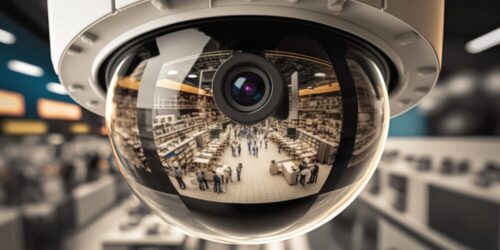
12.11.23 – SSI – SSI Staff –CHICAGO
New retail worker safety report highlights how technology, communications, preparedness and training can help retailers create safer stores.
As the year’s peak shopping season hits its stride, an inaugural Retail Worker Safety Report from Motorola Solutions found that many retail workers and managers perceive safety incidents at their stores are on the rise.
The survey’s U.S. respondents reported that petty theft (54%), grab-and-run incidents (35%) and hostile customer interactions (31%) have increased in their stores over the past year, and as a result, nearly two out of three are at least somewhat concerned for their personal safety at work heading into the holiday shopping season.
“The holiday bustle can be a stressful time for retailers. Sales associates and managers shouldn’t have to be concerned about their safety on top of everything else,” says Sharon Hong, vice president, ecosystem solutions, at Motorola Solutions, in the company announcement.
“Our report found that retail workers are looking for more technology that can help them be better aware of safety threats, spot illicit activity and communicate quickly and seamlessly with other employees and first responders should an incident arise,” she says.
More Insights From the Retail Worker Safety Report
Key findings from the Retail Worker Safety Report include:
Invest a few minutes of your time to read this Home Automation Deep Dive report. It’s a perfect opportunity to broaden your knowledge base and position your security business for greater success.Download your copy now!
- Low-tech communication channels are still heavily relied upon during store emergencies: Retail workers and managers said they access landline telephones (58%) and PA systems (45%) to report store safety concerns while nearly one-third (28%) would rely on yelling to inform coworkers of an incident. These methods do not often enable a quick connection with public safety officials should store employees need immediate help.
- Technology can play a meaningful role in increasing retail workers’ feelings of safety: Respondents said their stores currently feature video security systems (76%), alarm systems (64%) and merchandise sensors (44%), but that additional technologies would make them feel safer such as artificial intelligence (AI) to detect guns (42%), access control systems to lock doors when threats are detected (36%), wearable/mounted panic buttons to alert for help (30%) and license plate readers to identify vehicles associated with criminal activity (30%).
- Some retailers are updating their safety and security protocols to support preparedness: Respondents reported progress in terms of preparedness and awareness. About one-third (36%) said their employer has introduced a new worker safety measure in the past 12 months, with top changes including increased emergency response training (49%), more timely communication about in-store incidents (41%) and additional security personnel (33%).
- Retail workers who feel safer stay longer: One in four (26%) respondents said they have considered leaving retail due to safety concerns. Retailers who invest in store safety and security measures are more likely to build employee morale and retention.
“The retail industry employs tens of millions of Americans and contributes trillions to the U.S. economy each year,” says Hong. “Technology, communication channels and preparedness training can help to create safer store environments for employees and shoppers alike.”
